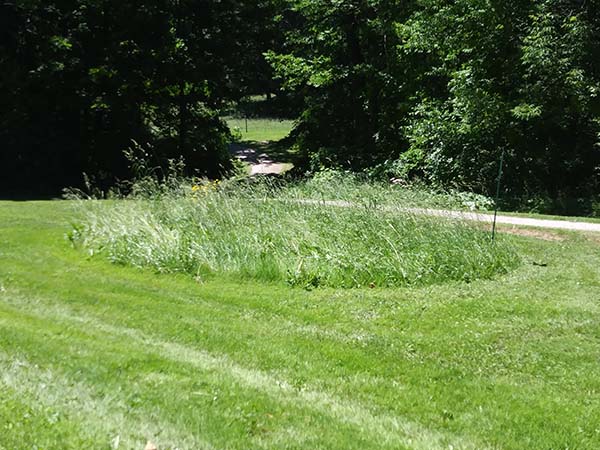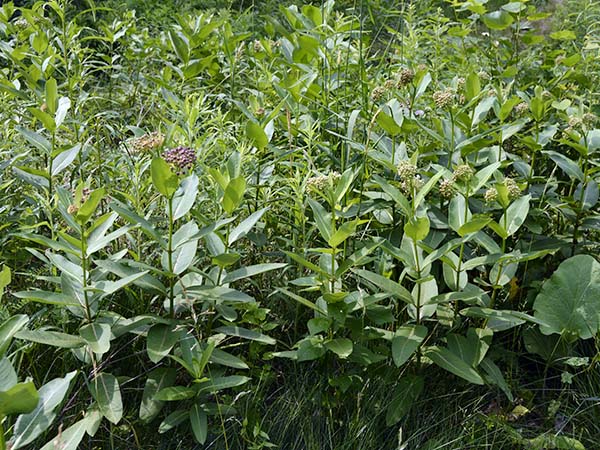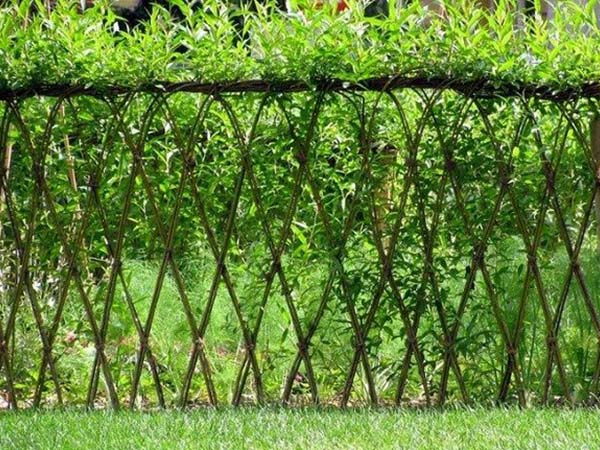Unlawning Strategies
Selecting a mowed site and not mowing it sounds simple, and it is, but there are often concerns about the appearance of the site. The following are proposed strategies to help you enjoy the tremendous benefits of transforming a mowed lawn into a pollinator friendly meadow while minimizing the perception of you new meadow as something messy or unkempt.
Ask youself these questions when selecting your site: Is the only time you go onto your lawn when you mow, water or weed it? Is it necessary to mow regularly to use the lawn for what you need? Are you mowing because you feel like your neighbors expect you to? Why exactly do you mow?
One of the important facts to restate here is that we are not promoting the elimination of all lawns, just the lawns not actively used for recreation space. Often, people only mow because they think they have to. This is based on cultural conditioning that benefits nobody. Unused or underutilized lawns can be left to grow into meadows that will save you money, reduce air, water and ground pollution, and increase habitat for pollinators. Change is hard, but in this case the benefits far outweigh the challenges.
Some strategies for your consideration:

Shaped Meadows
Mowing around geometrically shaped areas creates an controlled look for those who want smaller, more lendscaped meadow areas. You can have fun with multiple shaped areas at a single site. Shaped areas also allow for easy movement around the unmowed meadow. Stone borders or any type of fencing can also be used to enhance the appearance of a site using this strategy. We recommend trying out a living fence.

Bordering Mowed Areas
Bordering smaller mowed areas with meadow can create a lovely and diverse landscape. If you want to maintain the site as a meadow, not letting any trees or woody species grow there, you'll need to mow or brush hog once every 1 - 3 years. These unmowed border areas can also be enhanced with pollinator friendly native flowering plants and edged with some type of fencing or stone.

Mowed Paths
One of the concerns about tranforming lawn into meadow is the difficulty moving through tall vegetation. If you have a space that needs to be traversed, you can simply mow a path to allow unfettered movement through the space. Paths can be straight, curved or meandering depending on the desired look.

Informational Signs
One of the best ways to ease confusion and concern about a developing meadow is the use of informational signage. Signs combine images, graphics and text to shift negative perceptions of a wild growing meadow. We have designed official Unlawning America signs for this purpose. There are a number of other "no mow" or "pollinator habitat" signs you can find online or you can create your own design.

Weedscaping
There are a number of attractive and beneficial flowering plants that are likely to grow in your unmowed lawn including milkweed, clover, asters and goldenrod. You can make your site look more intentional by simply collecting and relocating existing flowering plants in groupings. These plants will thrive since they are naturally occuring at the site. Be cautious of adding or cultivating highly invasive plants like purple loosestrife, wild parsnip or japanese knotweed. Use inaturalist or a field guide to help idenitfy what you have.

Living Fences
If you are going for a more highly managed appearance with a clearly defined border you may want to consider a living fence. Although this can be almost any kind of hardy plant growing in your site, willow, red osier dogwood, blackberry and raspberry are all good options. Living fences can be woven in a wide variety of patterns to create a distinctive, and attractive border. Perennials like goldenrod can be used but will need to be rewoven each year. Woody species like willow or blackberry will continue to grow in place but will need annual pruning and managing for spread.